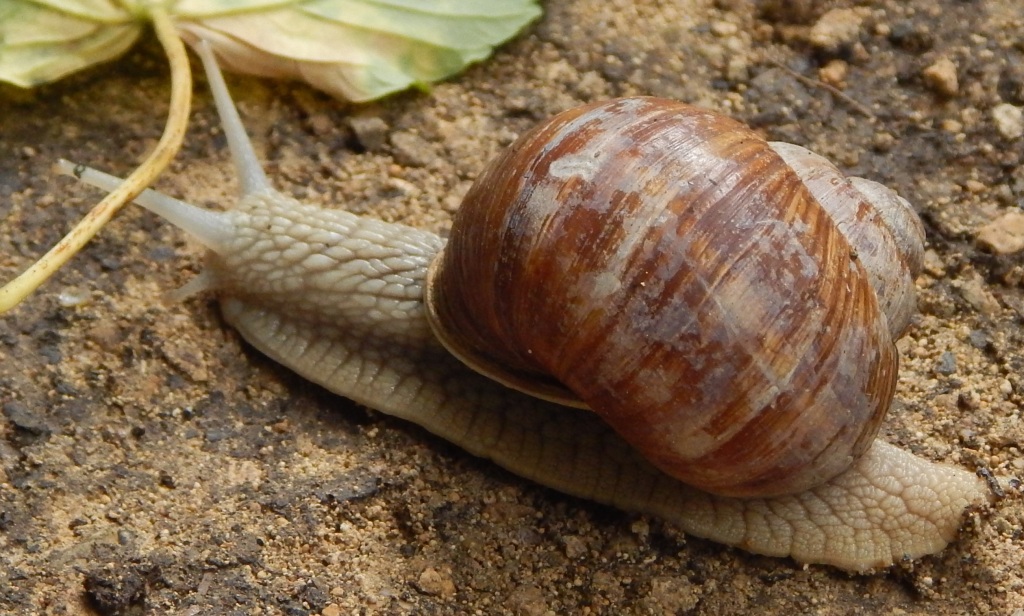
[172] Helix pomatia, Roman Snail
Introduction
Helix pomatia, the Roman Snail is the largest snail found in England. It is an air-breathing land snail introduced by the Romans.
It is also known as a Burgundy Snail, Edible Snail or Escargot when used in cooking.
I will also look at Cornu aspersum, the Garden Snail; Cepaea nemoralis, the Grove Snail and other British Snails.
Taxonomy
Kingdom – Animals
Phylum – Molluscs
Class – Gastropods (Slugs and Snails)
Order – Stylommatophora
Family – Helicidae (Typical Snails)
Genus – Helix
Scientific Name -Helix pomatia
Name
Not surprisingly the Roman Snail derives its name from the fact that it was introduced by the Romans about two thousand years ago as a food. The word ‘snail’ comes from Old English and earlier Germanic and Norse roots.
The Latin word ‘helix’ from Ancient Greek denotes something twisted and is used for anything spiral in shape like the shell of a snail.
I can’t find any explanation for ‘pomatia’ but Google Translate suggests that it may from a place called Lens in France or Belgium, perhaps where the species was first defined by zoologists. Sometimes nobody knows where scientific names come from.
Description
I won’t go into a detailed description of a snail with its familiar shell, eyes on stalks, and single large foot that leaves a trail of slime. Among snails, the Roman Snail is very obvious in its appearance. Apart from its creamy coloured shell and very light-coloured body it’s the largest snail seen in Britain – with a shell up to five centimetres across.

Habitat and use
The Roman Snail is an endangered species but is still found in many countries across Europe. It survives in Southern England only in undisturbed grassy or bushy wastelands.
They used to be eaten both by the Ancient Greeks and the Romans and are still liked in France but cultivation is very difficult.
Other Snails
Cornu aspersum, the Garden Snail is in the same family and also eaten as ‘Escargots.’ For two hundred years it was known as Helix aspersa, in the same genus as the Roman Snail but has now been moved to a different genus. [If you haven’t studied Latin don’t worry about aspersa becoming aspersum. It’s part of the syntax of gender agreement and masculine, feminine and neuter nouns.]
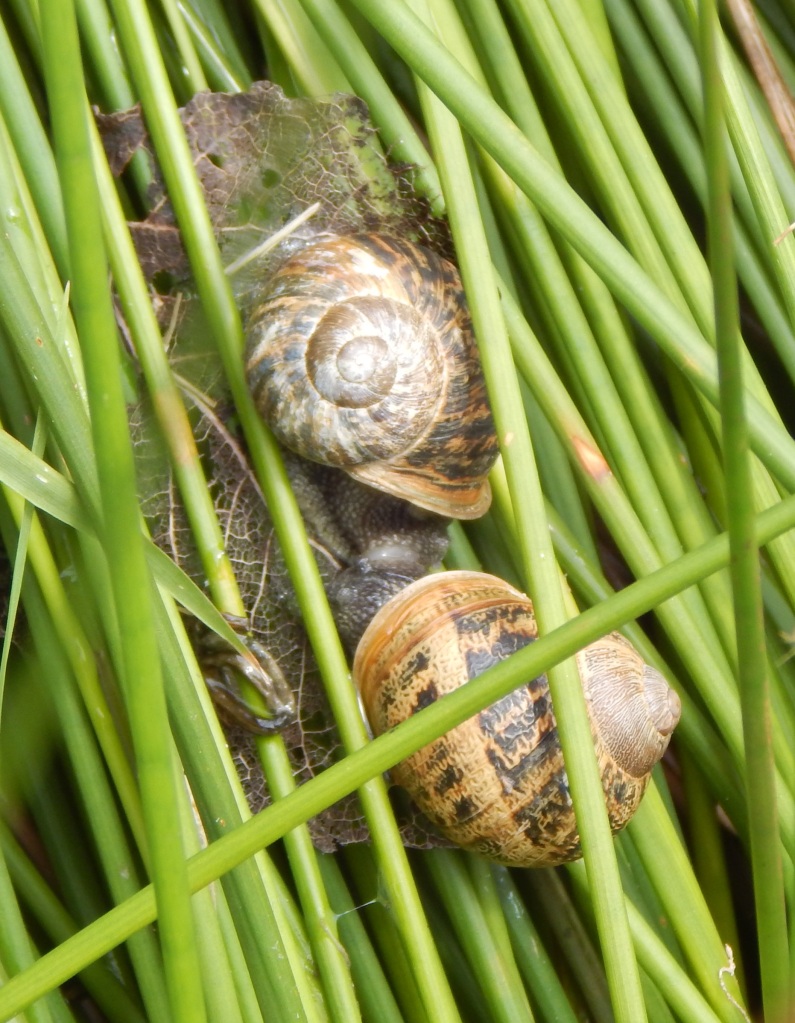
I won’t go into gastropod anatomy but snails are hermaphrodite – simultaneously male and female. If you imagine both male and female sexual organs where you might expect the right ear to be, you have a first approximation of snail reproduction. The snails in the picture above are mating.
Cepaea nemoralis, The Grove Snail (or Brown-lipped Snail or Lemon Snail) is another species that has been moved out of Helix. It is one of the largest and most common snails of Europe and comes in various markings – reddish, brownish, yellow or white, with or without one or two darker bands.
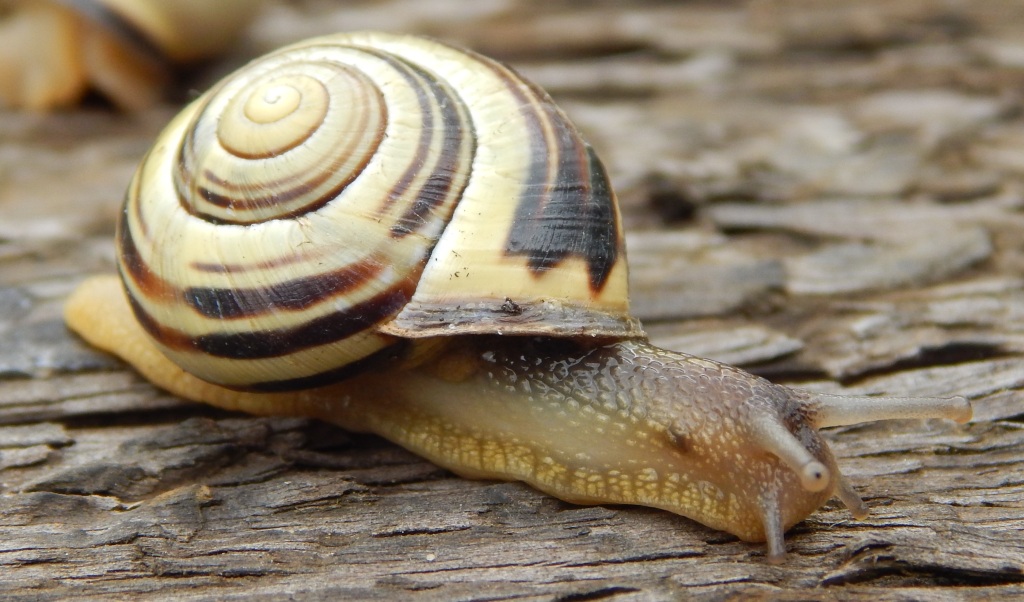
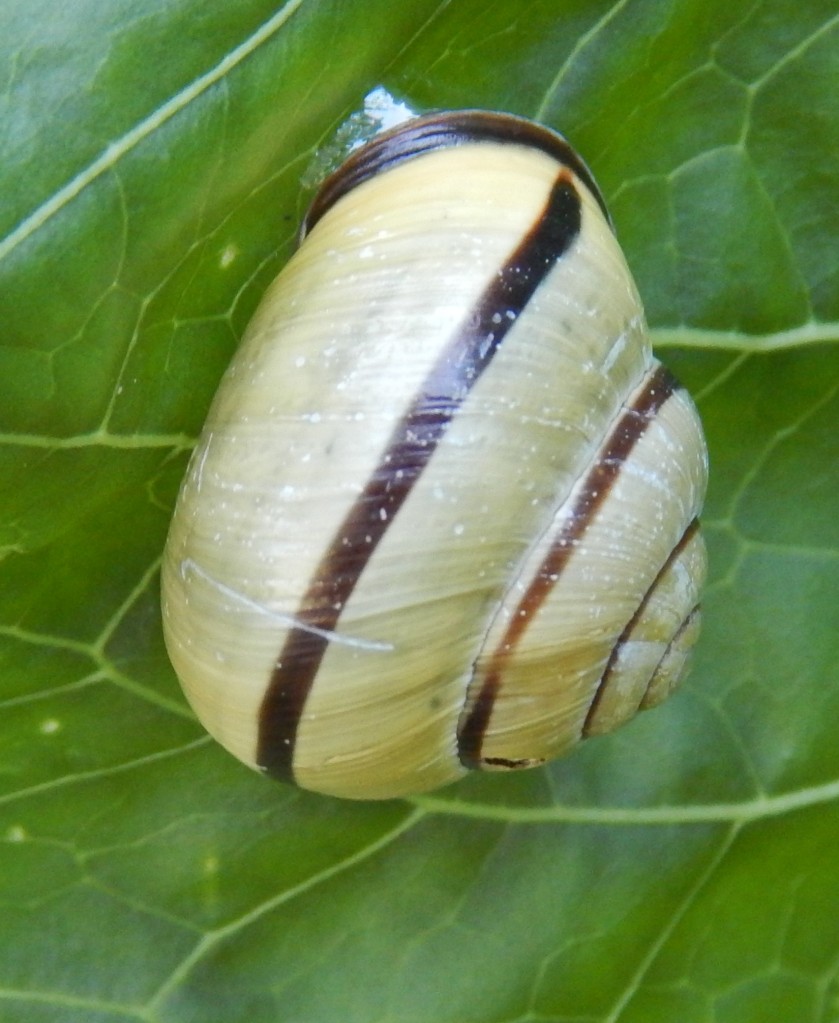
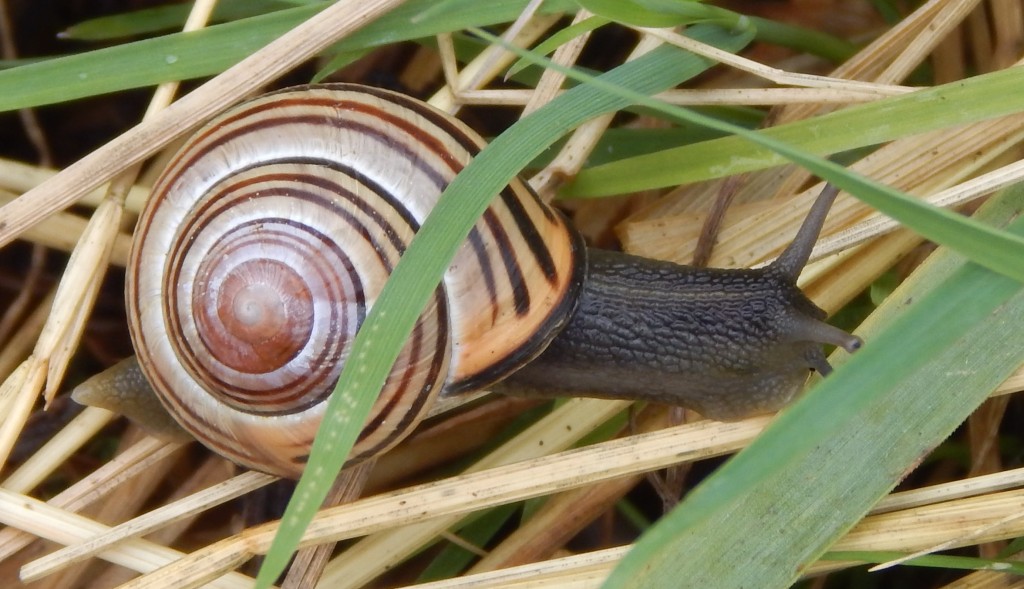
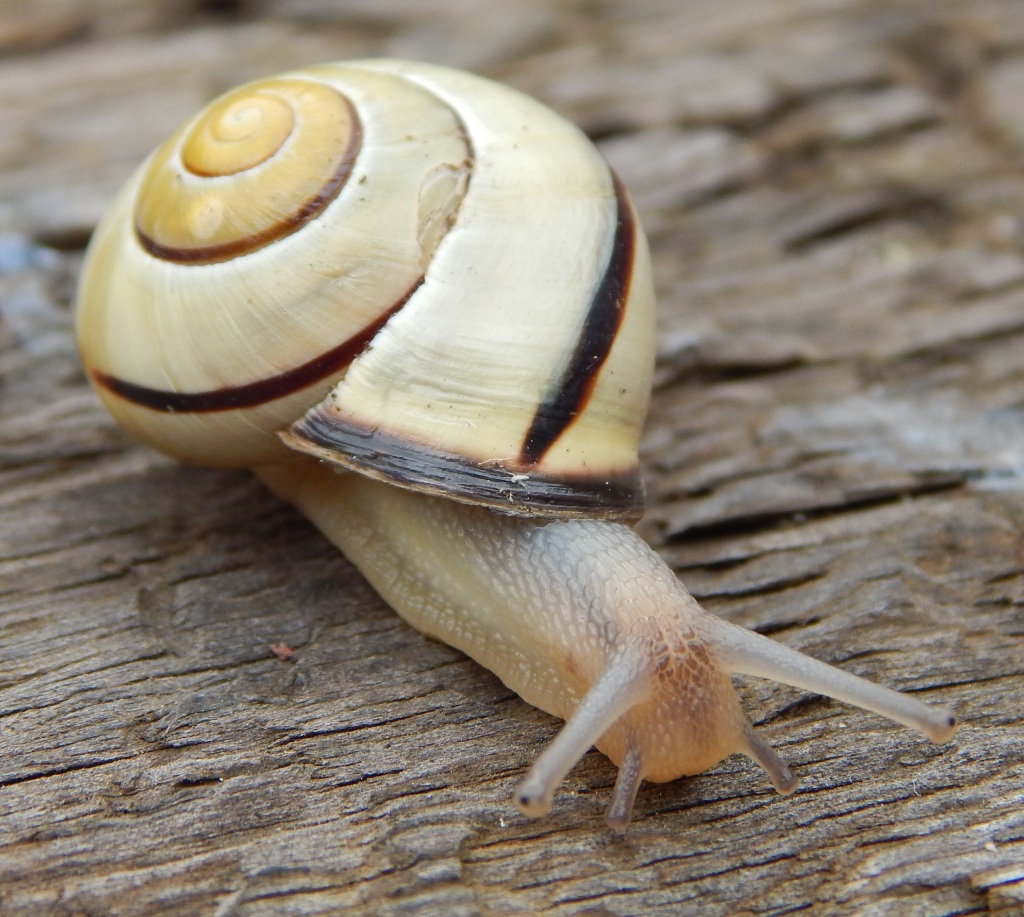
See also
I wanted to include all the British land snails but any attempt at generic taxonomy gets very complicated. Wikipedia describes them as terrestrial, pulmonate, gastropod molluscs, which is not an easy definition. Some groups have gills to breathe underwater and some have a kind of lung that enables them to breathe air but neither of these two types is monophyletic. (That means that evolution has made the same split more than once.)
Snails have diverged so that some live in the sea, some in fresh water and some on land. Some sea snails have lungs and some land snails have gills!
We tend to think of snails as having a large shell into which they can hide, and slugs having no shell. (See [038] Slugs.) There is little otherwise to distinguish these gastropods.
Anyway, a quick Internet search shows that there are about 100-150 types of land snail that may be found in Britain. I’ve tried to identify some of my old photographs but I’m left with some that I can only call snails.
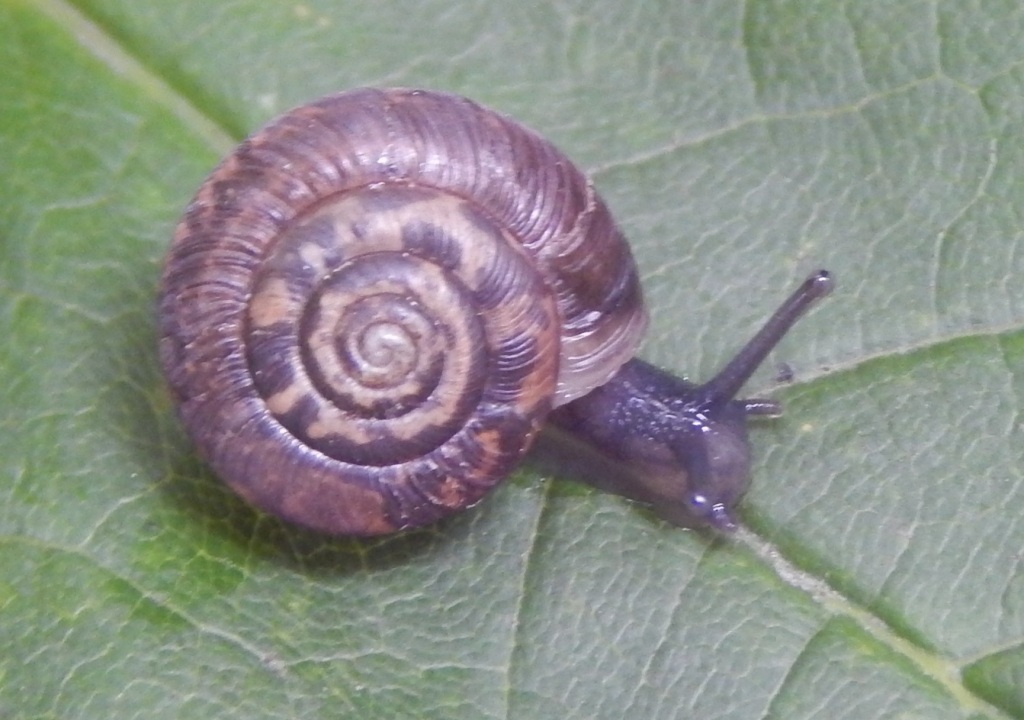

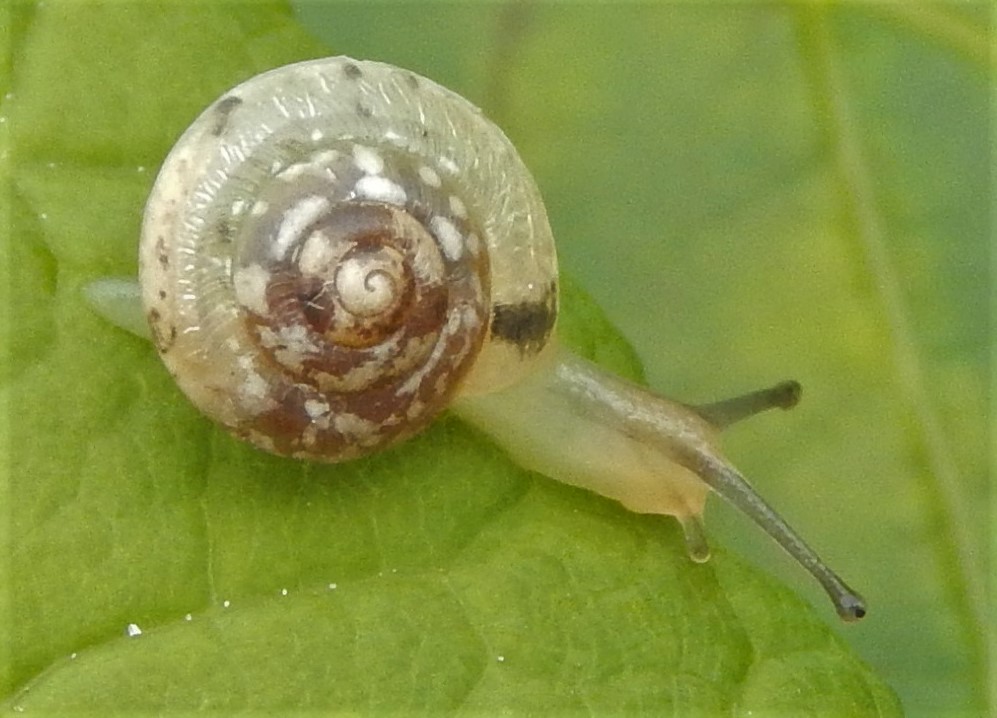
For pond snails see [215].

Pingback: [348] Turdus philomelos, Song Thrush | The Species of Britain